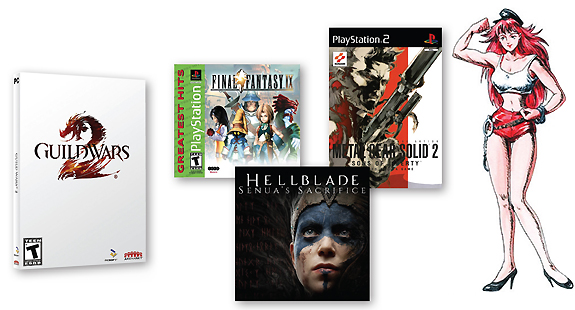Diversity in Gaming | Games, Gamers, & Gaming

My wife and I enjoy playing Guild Wars 2, a massive multiplayer online role-playing game (MMORPG) set in a unique fictional universe that combines elements of high fantasy, steampunk, and sf. While the forgiving progression system, robust in-game economy, and varied game play mechanics have been more than enough to keep us interested for going on four years, a recent addition has made my wife love it even more.
My wife is African American and wears her hair natural. While she’s an avid gamer who has played a wide variety of characters over the years, she’s never played a character that actually looks like her—she’s played as black women but always with straight hair. But ArenaNet, the developer behind Guild Wars 2, recently added more options for customizing players’ in-game avatars. My wife can now create a black female character with an Afro or braids, and by doing so she has a deeper connection with her character.
Mirrors and windows
Rudine Sims Bishop coined the phrase “mirrors and windows” to describe the need in children’s literature for characters who allow readers to see themselves and those who are different from themselves. This need is equally as strong in gaming. Games, gamers, and gaming often experience well-deserved criticism when it comes to a lack of diversity and inclusiveness. However, there has been some progress made.
Guild Wars 2, as previously mentioned, recently added new choices to its already robust character options. Players can create a wide range of ethnic styles and looks, even among the game’s nonhuman races, and are encouraged to come up with at least a basic story about them. One of the best ways to engage patrons with gaming is to have them invent backstories for their characters in RPGs; the same could be done with this game. Beyond the player-characters, the game’s story content includes characters of a variety of cultural backgrounds and skin tones; an LGBTQ character and a transgender character; a race of characters who have no assigned sex and whose gender is completely self-determined; a character with a disability; and some hints at those living with post-traumatic stress disorder. It’s not a perfect representation of varied physical and mental states—one villain is a stereotypical “insane genius”—but it’s beyond what many other MMORPGs attempt.
Games have struggled to portray mental illness with both sensitivity and relevance to their narratives and game play mechanics. Rarely do characters have to deal with their mental health as a challenge, and even more rarely is the main player-character afflicted with a mental or behavioral disorder at all. Hellblade: Senua’s Sacrifice for PC and PlayStation 4 changes that. The main character suffers with psychosis and must constantly question her reality. Her mental state plays into the game mechanics, making puzzles and enemy encounters more challenging, and serves as a crux to the overall story.
Of course, any discussion of heroes with mental disorders is incomplete without a mention of Batman, and while he’s primarily a comic book character, the “Arkham” series has cemented his video game legacy. All four games in the series discuss at length his obsession and paranoia, with more than a few hints that he’s just as mentally unstable as the villains he fights.
It may surprise some gamers that non-heteronormative characters go all the way back to the 1980s. The arcade classic Final Fight, which casts a trans woman as one of its villains, is a well-known piece of video game trivia, but many might be surprised that Super Mario 2 features a trans character as well—the original instruction manual references a character named Birdo who “believes he is female” and prefers to be called Birdetta. The iconic RPG Fallout 2 features video games’ first same-sex marriage. Metal Gear Solid 2: Sons of Liberty and Star Wars: Knight of the Old Republic feature bisexual characters, and Final Fantasy IX includes a trans character.
Far to go
There’s still more ground to cover with regard to game diversity. People of color are vastly outnumbered in game casts. Nonheteronormative characters are usually relegated to supporting roles. The challenges of being part of a marginalized group are rarely explored. Mental illness is getting more attention in games, but it’s still far more likely associated with villainy.
Also, too often the gaming community responds with resistance when the issue of diversity is raised. Members of majority groups disparage the desire for people to see characters that defy the norm, frequently using the excuse that they themselves “just want a good game” and don’t care about the race, gender, or health of the main character.
Of course, if they truly didn’t care, then they wouldn’t be bothered in the least by this ongoing discussion. As a librarian, you can be an advocate for both video games and diversity in gaming and help foster a culture of acceptance and inclusion in your gaming community.
Until next time, keep telling yourself: just one more level!
Add Comment :-
RELATED
ALREADY A SUBSCRIBER? LOG IN
We are currently offering this content for free. Sign up now to activate your personal profile, where you can save articles for future viewing








